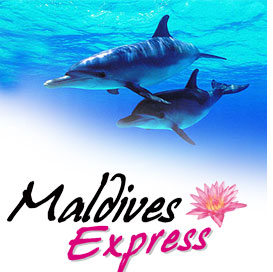|
The national Language of Maldives is Dhivehi; Dhivehi has
huge influences of Sanskrit and according to some
researchers Elu, an ancient form of Sinhala, is strongly
influenced by the main languages of the region. Given the
wide dispersion of islands it is not surprising that the
vocabulary and pronunciation vary from atoll to atoll, with
the difference being more significant in the dialects spoken
in the southernmost atolls. Our Language also has its own
script called Thaana; Thaana is written from right to left
and has 24 letters in its alphabet.
The island communities practice mutual aid to survive
difficult situations. A huge chain of families provide a
network of protection for family members and help out each
other’s any time they need. Along with the parents other
members of the family also contribute in taking care of
children. Traditionally men go out fishing during the day
and women are in charge to look after the affairs of the
family and frequently the community. Nowadays even smaller
island communities practice the same.
Since its conversion to Islam in 1153, the major events and
festivals of Maldivian life pursue the Muslim Calendar. From
childhood religious education is provided both at home as
well as schools. Islam is part of the school curriculum and
is taught concurrently with additional subjects.
The beautifully carved tombstones in some of the old
cemeteries and the fine stone carving of the Hukuru Miskiiy
in Male' bear witness to the intricate skills of Maldivian
stone carvers of the past.Wooden Lacquer Ware
Perhaps the most distinctive of the Maldivian handicrafts,
these are almost exclusively produced in Thulhaadhoo in Baa
Atoll. Liye Laajehun as it is called in Dhivehi involves the
process of shaping and hollowing out pieces of wood to form
beautifully crafted boxes, containers and ornamental
objects. Made from the local funa,
Beautiful red mats are woven throughout the country, the
most famous of which are those that are woven by the women
of Gadhdhoo in Gaafu Dhaalu Atoll. Thundu Kunaa as they are
known in Dhivehi ranges in size from that of a place mat to
a full size single mattress.
Although the tools used in the building of dhonis have
changed, little has changed of its basic design. As in the
past, the boats are still being built without a documented
plan.
Dhonis are mainly used for fishing and provide the
livelihood for a large proportion of the population. Others
are modified to be used for transportation of passengers.
Even the luxury cruise vessels that are built in the country
uses the same basic hull design and can be as long as 30
meters (100 feet) or more.
|
